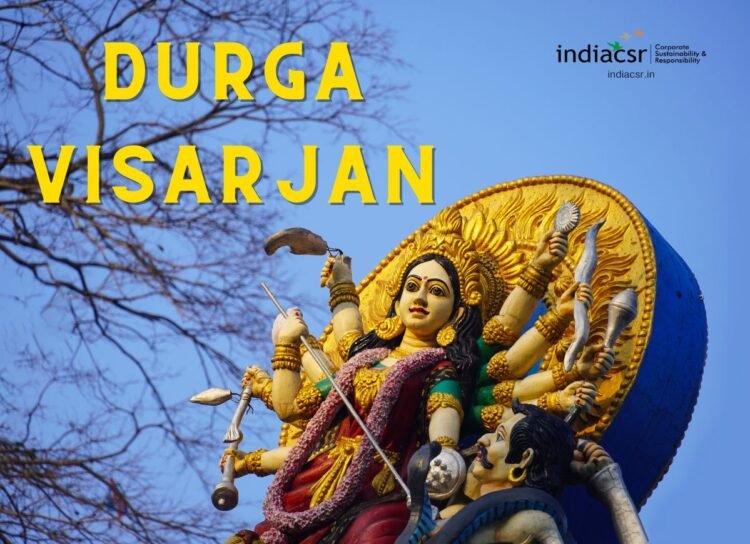Durga Visarjan: The Immersion of Goddess Durga
Durga visarjan is the final ritual of the Durga Puja festival, which is celebrated with great fervor and devotion by Hindus, especially in the eastern and northeastern parts of India. Durga Puja is a ten-day festival that honors the goddess Durga, who is believed to be the embodiment of power, wisdom, and compassion. She is also the slayer of the demon Mahishasura, who had terrorized the gods and humans. During the festival, people worship the goddess in various forms and manifestations, such as Mahalaya, Shashthi, Saptami, Ashtami, Navami, and Dashami.
The Significance of Durga Visarjan
Durga visarjan is the ritual of immersing the idol of goddess Durga in a water body, such as a river, lake, or sea. It is performed on the tenth day of the festival, which is also known as Vijayadashami or Dussehra. This day marks the victory of good over evil, as it is believed that on this day, Durga killed Mahishasura and restored peace and harmony in the world. The immersion of the idol symbolizes the return of the goddess to her divine abode after blessing her devotees on earth. It also signifies the end of her earthly sojourn and the beginning of a new cycle of creation and destruction.
The Process of Durga Visarjan
Durga visarjan is a grand and emotional affair for the devotees, who bid farewell to the goddess with tears and joy. The process involves several steps, such as:
- Sindoor Khela: This is a ritual where married women smear vermilion or sindoor on each other’s faces and on the idol of Durga as a sign of marital bliss and prosperity. They also offer sweets and flowers to the goddess and seek her blessings for themselves and their families.
- Shanti Jol: This is a ritual where water from a copper vessel is sprinkled on the idol and on the devotees as a gesture of peace and harmony. The water is considered to be sacred and auspicious, as it contains holy items such as turmeric, sandalwood, flowers, and leaves.
- Visarjan Prarthana: This is a ritual where prayers and hymns are recited to thank the goddess for her grace and protection. The devotees also request her to come back again next year with more joy and happiness.
- Visarjan Procession: This is a ritual where the idol is carried in a decorated vehicle or a boat to the nearest water body. The procession is accompanied by music, dance, chants, and slogans. People also throw flowers and colors at the idol and at each other as a mark of celebration.
- Visarjan Ceremony: This is the final ritual where the idol is immersed in the water with utmost respect and reverence. The devotees also immerse clay pots containing soil and seeds in the water as a symbol of fertility and abundance. They then take a dip in the water to purify themselves and seek forgiveness for their sins.
The Importance of Durga Visarjan
Durga visarjan is an important ritual that has both religious and cultural significance. It teaches us several lessons, such as:
- Respect for Nature: Durga visarjan reminds us that we are part of nature and that we should respect its cycles and laws. It also encourages us to use eco-friendly materials for making idols and avoid polluting the water bodies.
- Detachment from Materialism: Durga visarjan teaches us that everything in this world is temporary and that we should not be attached to material possessions. It also inspires us to be humble and grateful for what we have and not be greedy or selfish.
- Faith in Divine Power: Durga visarjan reinforces our faith in the divine power that guides us through our difficulties and challenges. It also motivates us to follow the path of righteousness and justice and not succumb to evil or temptation.
- Love for Humanity: Durga visarjan fosters a sense of love and unity among people from different backgrounds and communities. It also promotes peace and harmony among people by celebrating diversity and tolerance.
Durga visarjan is a beautiful and meaningful ritual that marks the culmination of the Durga Puja festival. It is a way of expressing our gratitude and devotion to goddess Durga, who is our mother, protector, and benefactor. It is also a way of celebrating life, nature, culture, and humanity with joy and enthusiasm.



















